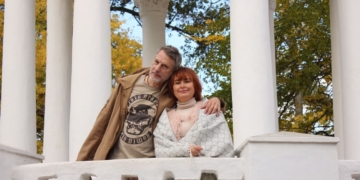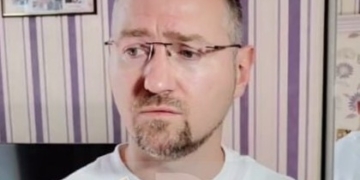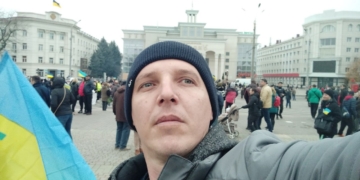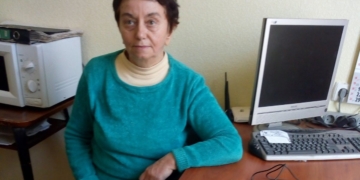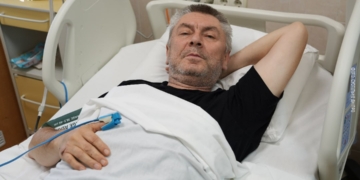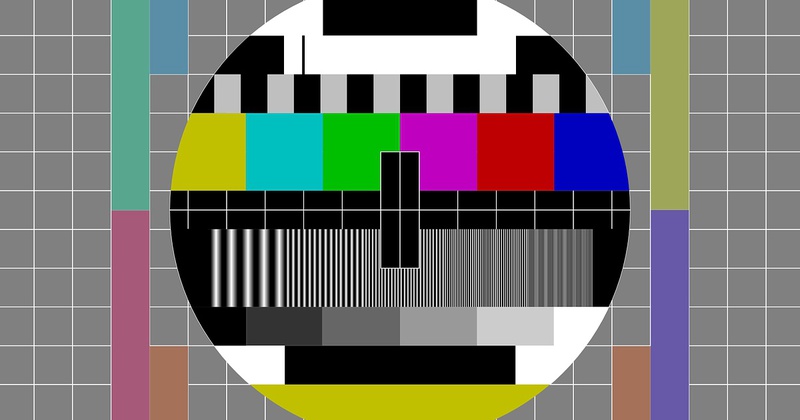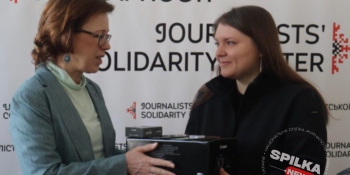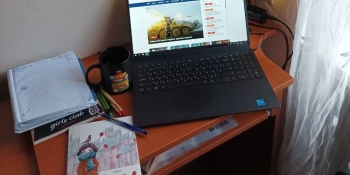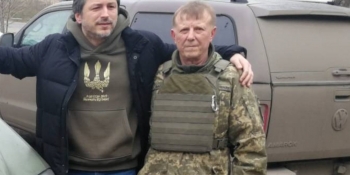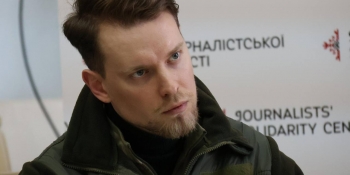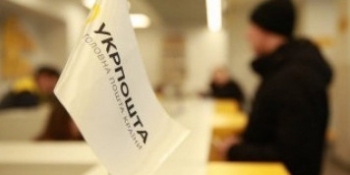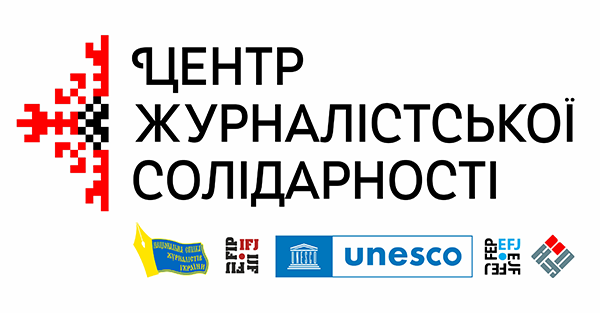Limitations in sources of financing, in particular, a drop in advertising revenues and investments from sponsors, caused by the full-scale war, have become a challenge for the entire Ukrainian media market. As for Odesa, the TV channels were the first to get ruined here – the state TV channels stopped airing altogether, and the rest had to optimize their staff. Print media also began to disappear from the information field. Local radio stations turned out to be completely unprepared for blackouts.
The online media niche has suffered a terrible narrowing, but the editors of publications, who had actively practiced attracting grants for their activities even before the large-scale war, admit now that they managed not only to survive, but also to increase their incomes, after which the number of projects aimed specifically at supporting the media in the conditions of war significantly increased.
What is important is that, in general, in the information space of Odesa, no critical reduction in terms of information security took place.
Public mass media worked quite responsibly, professionally and without excessive panic, experts say. However, recorded was the appearance of numerous anonymous online channels, which, most likely, intentionally published fakes, disinformation and different Russian narratives, which added the work of their simplification and debunking by independent media.
Television
Before the full-scale war, no region in Ukraine could compete with the television market of Odesa, because there were more than 30 registered channels, of which, however, according to an expert of the National Union of Journalists of Ukraine (NUJU) Valerii Bolhan, of them about 21-22 were operating, and about 10 produced information and news content.
Currently, there are only a few channels on the market, but even those either broadcast the national 24-hour telethon called Yedyni Novyny, or broadcast their archival materials or run movies.
“There have been significant staff reductions. Sometimes up to 50%,” Valerii Bolhan notes.
Pavlo Kolotvin, an expert and regional representative of the Institute of Mass Information (IMI), notes that, as of now, television in Odesa is beginning to recover.
“At the beginning of the large-scale war in Odesa, only Suspilne TV actually worked. Pershyi Miskyi [First City Channel] and Hrad did not switch to the telethon broadcasting, but they reduced their time on the air. The rest had to be preserved, but now they are starting to broadcast at least one or two hours of regional content. Each of these channels has a certain investor, so it can be concluded that they assess favorably the further situation on the market,” the expert notes.
Valerii Bolhan disagrees with his colleague in this and notes: “This alleged recovering rather shows an attempt to preserve channels’ frequencies, as maintaining a channel (even if it is not working) is actually very expensive, so sometimes it is more profitable for the owners to have the channel work in vain than not to work at all.”

Editor-in-Chief of Channel 7 Oleksandr Poluyev confirms that, in fact, until May, they had only broadcast the telethon. But now, they already have limited broadcasting so they run their own content only.
“We have up to two hours of airtime: this includes news broadcasts and one or two more thematic broadcasts. We try to invite guests to the studio, make exclusive stories both in the recording and live. Since the current situation with energy supply is very difficult, we have to adapt to these conditions. We have equipment that can help us in case the electricity is suddenly turned off, but it has a limited working time and recues us if the recording of the program is coming to an end. If the broadcast is just starting, we have to move to a backup studio, which was set up in a nearby business center, where we conduct most of the interviews,” says Poluyev.
Currently, the creative staff of Channel 7 consists of three journalists and two presenters. According to the editor-in-chief, some reductions had taken place, but not because of layoffs, but because some colleagues fled to Europe to escape the war. Several more employees went to serve in the Armed Forces of Ukraine.
In addition to the TV channel, the editorial office has a website and a Telegram channel. Instagram and Facebook pages are currently inactive. According to Oleksandr Poluyev, there is a lack of time and content for this.
Since Channel 7 is fully financed by an investor, the problems of the advertising market, according to the editor-in-chief, do not affect the team. Nevertheless, the editorial office is studying the possibility of participating in grant projects. “But here we are not interested in the financial side, but the organizational one: in particular, the opportunity to improve the content. For example, the ability to start working with topics and characters to which we currently do not have access to,” Poluyev noted.
Periodicals
If we analyze the subscription catalog of periodicals of Odesa City and the region, we can understand then as of now, only six publications that are published solely in Odesa and about a dozen of small district publications plan to continue working in 2023.
IMI expert Pavlo Kolotvin notes that the media market now has mainly newspapers that had concluded contracts for information support of authorities. All the rest have almost ceased their activities.
Some of the publications that were not put into the catalog are likely to also continue been published in 2023, but this does not negate the fact that the situation with the print media in Odesa is currently quite complicated.
Among the main reasons that led to this, we can confidently single out three common ones for all:
– an increase in the cost of printing and logistics from 30% to sometimes even 50%,
– unstable operation of the post office, which, according to some editors, “is purposefully, methodically and systematically “killing” the printed press”,
– a lack of stable financing.
Regarding the latest item, Valerii Bolhan notes that the problem of many printed publications was their reluctance to reformat new financial models of work: “Those who immediately after denationalization actively joined the work, searching for sources of financing and new models of work, survived and more or less confidently feel better on the market. Those, who managed to get crisis funding from donors at the beginning of the war, somehow made it through this year, but now, they don’t know how to live on, as they can’t and don’t know how to find means for self-realization. Many had to completely cease their activities, because all they did was complaining about how miserable they are and what situation they are in.”
According to the expert, the problem of distribution, which small districts publications used to complain about, could also be solved without resorting to over-drastic solutions: “Most of their subscribers are usually residents of district centers. In order not to depend on the monopolistic post office, distribution can be ensured through one courier per editorial office, and it would be cheaper than an agreement with the post office service, which is not in a hurry to deliver.”
Oleh Suslov, the editor-in-chief of the Vecherniaya Odessa and Reklama newspapers, does not conceal the fact that the war significantly affected the work of the editorial office.
“There are actually no ads. Retail sales had also been bad up until last autumn, but we are working hard – we are looking for financial support wherever we can. We try to participate as much as possible in grants and various projects that involve any kind of assistance. It’s difficult for us, because we are experiencing this for the first time, but for now we’re holding on,” says Oleh Suslov.
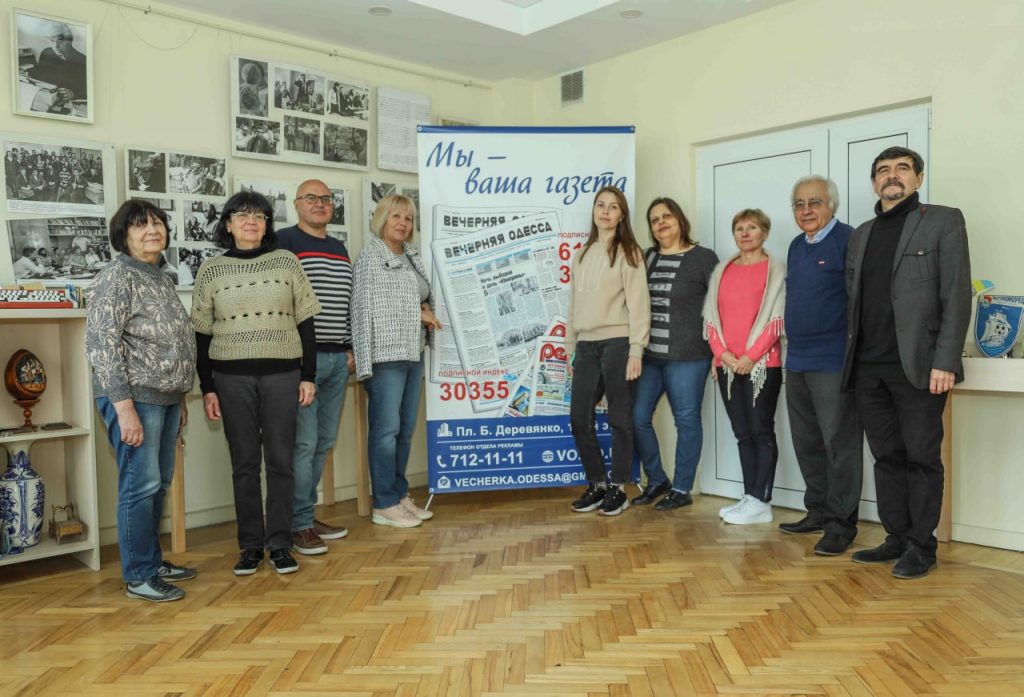
Before the war, the newspaper was regularly published twice a week. Due to the beginning of the Russian invasion, they had trouble working until the mid-March, and on March 17, when Ukrposhta [state post service] was able to guarantee the delivery of periodicals, the newspaper resumed its work. However, now it is distributed only once a week. This is due to problems with the printing house. Since the newspaper has an A2 format, it can only be printed in Odesa and Vinnytsia, but due to the fact that the local publishing house Chornomoriya is currently going through difficult times and only works one day a week, the newspapers printed there are forced to adapt.
Now the newspaper is published on 6-8 pages, two of which (since July) are filled with TV guide.
At the start of the new year, the subscription to the newspaper rose by approximately 20%.
Despite the new challenges and difficulties, the editorial office consisting of 16 employees for two newspapers, does not lose its optimism, as the subscription has been announced for a year. However, due to a significant lack of funds, the employees had to be transferred to part-time work and paid accordingly.
“In order for a person to receive UAH 6,000-8,000 a month, we ensure fees and bonuses. Unfortunately, it is not possible to pay more, since we pay taxes according to the law. But at least during the war there were no delays in the payment of salaries. We will try to keep it this way,” assures Oleh Suslov.
He adds that nowadays, it is most important for editors to understand that their work is needed by readers, and the team sees its mission first and foremost in conveying the truth to the audience: “There is a lot of Russian propaganda in the information space, the audience absorbs it like a sponge. We are trying to counteract it. In addition, our fundamental position is unique content, we do not reprint and try to keep our intellectual audience in tune. New sections have been launched, we cover experience of our compatriots who, for example, left for Europe, and, having lived there, can tell us something that useful to our readers willing to migrate. In addition, we are trying to acquaint those who were forced to move to Odesa due to the war with our region.”
Hennadii Chabanov, who oversees and manages three newspapers at once (Odeske Zhyttia [Odesa Life], On Pensiyi [After Retirement] and Pensiina Teleprohrama [Pension TV Program Guide]) notes that, despite the war and the difficult situation on the media market, his publications managed to stay afloat in 2022 and even find opportunities for development.
“The profit of our newspapers depends on subscriptions, retail sales and advertising. If the first two fell by 10-15% during the year, the situation with advertising was much more critical. However, as of now, we managed to restore it by about 30%,” says Chabanov.
Due to the almost threefold increase in newspaper’s price and difficult logistics, the editorial office has increased the subscription price of its publications by 25-30% starting this year, and the retail price will also increase by almost a third.
If with the beginning of a full-scale war, the editorial office had to reduce the number of pages, from February this year, the newspaper Odeske Zhyttia will start publishing four additional pages that will cover a specific area of the region and offer local content. In this way, the editorial office plans to increase the additional audience. If such an idea embodies, and the team does not even have doubts about it, then a few months later the newspaper will add four more pages.
Realization of this idea at the beginning will be possible for the editorial office partly thanks to the financial support of IREX, as well as to attracting its own investments.
It is possible that newspaper employees will try to find some other grant support for this idea in the future.
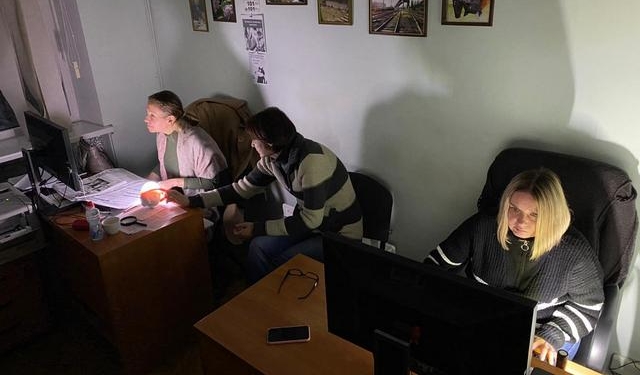
“Before 2022, we had not had to deal with grants at all, but in the current conditions it is difficult to work, relying only on our resources and capabilities. So, for example, we received a charging station from the Association of Independent Regional Publishers of Ukraine. And since they had a generator long before the war, they managed to set up a kind of media hub for independent publications. Currently, we still have a problem with the Internet, but we expect to use Starlink in the near future,” says Chabanov.
What concerns how print publications can remain competitive on the media market, Hennadii has his own stance: “There is such a chance, and the chance is the union of newspapers. Unification of efforts, finances, and cooperation with district editorial offices.”
In addition to the printed editions, the editorial office maintains two websites that duplicate the newspaper brand and have pages and channels in social networks. Here, the situation is better in terms of the number of readers, but advertising from local businesses has also decreased. However, thanks to a large number of readers, revenues from Google advertising and the programmatic advertising exchange have increased.
“In February-March period, we had a boom of 500,000 unique visitors. In the summer, the audience declined, but now it is growing again,” says Chabanov.
The war did not force the editorial office to reduce staff. On the contrary, it led to the need for additional qualified personnel, as the team began to develop a new working division – video journalism.
“We want to develop and do everything possible for this,” the interlocutor summarizes.
What concerns more local periodicals, the war became an overwhelming test for many of these publications. Of the 26 newspapers that were published in the region even before denationalization, not even half remained on the market: many of those that managed to survive denationalization and the coronavirus crisis could not withstand the new test. For example, Promin (Shyriayeve District), Visti Kodymshchyny, Oknianskyi Visnyk and Visti Biliayivky ceased to be published. But, for example, Stepovyi Mayak (Berezivka District) is published only once a month on four pages.
Halyna Halymonyk, the editor-in-chief of the newspaper Visti Biliayivky, told why the editorial office did not announce the subscription to its edition for 2023: “The newspaper miraculously managed to survive the 2022 subscription year with a circulation of less than 900 copies. We have lost many subscribers due to the terrible work of the post office. There were cases when the newspaper was delivered to readers with a week’s delay, accordingly, paid greetings or announcements became irrelevant, and complaints from readers were constantly increasing. We are fortunate that the advertising losses, the increase in the cost of logistics and printing were covered thanks to the financial support of DW Akademie and the agreement with the city council on information coverage. In the end, we had to make a rather difficult, but, in my opinion, proper decision under such conditions – to close the printed newspaper. The only thing we did not expect was that many subscribers would take this information so painfully, because we were convinced that all our subscribers read our online sites called Biliayivka.City or Open Dniester, which duplicated a lot of information from the newspaper. And it turned out that we were wrong. Therefore, we are currently looking for a grant project that will allow us to print such a newsletter at least once a month, so as not to deprive readers who are not active Internet users.”
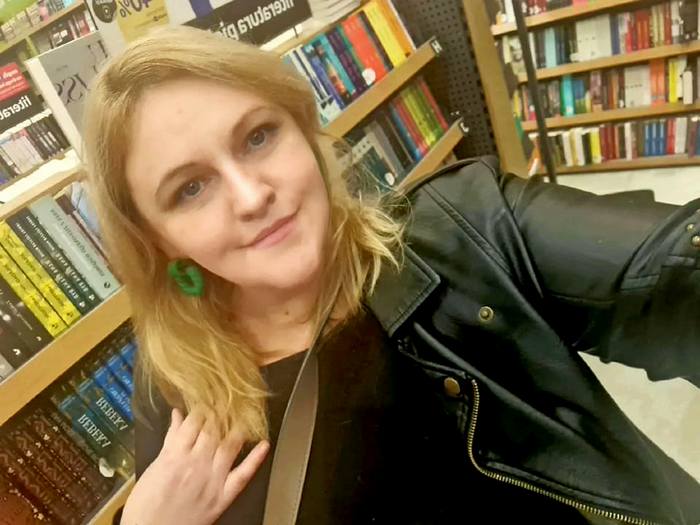
“The situation is extremely difficult,” notes Viktoriya Mainych, the editor-in-chief of the weekly newspaper Novynar (Zakharivka District).
She says that it had not been easy for the publication’s editors to work even before the war, because they did not have the financial support from local authorities promised by the denationalization reform (it is about cooperation in information assistance).
With the beginning of the war, only the first two issues of the newspaper were not printed. Later, the work improved. However, from March to April, the editorial team, consisting of four employees (an editor, a journalist, an accountant, and a layout designer), worked on a volunteer basis – they were forced to take vacations at their own expense, but at the same time continue to publish the newspaper. In addition, in the summer, we had to reduce the number of pages from eight to four.
During the war, the editorial office lost about 400 subscribers, which, according to the interlocutor, was largely contributed to by the unsatisfactory work of Ukrposhta’s mobile branches and the reluctance of postmen to conduct a subscription campaign.
Despite all odds, the editors announced a subscription for 2023, raising the price by UAH 5. Currently, the circulation of the weekly is 1,100 copies.
In order to keep the newspaper, Viktoriya Mainych managed to establish cooperation with the local authorities in April, putting aside personal misunderstandings, because informing people and suppressing panic attacks among the local population became a common prerogative of both sides.
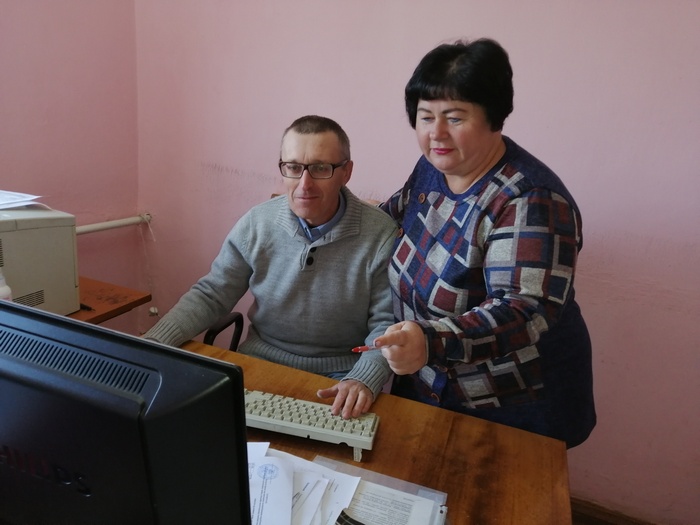
“Since the district borders the Republic of Moldova, in particular, the unrecognized Transnistrian Republic, which is 12 kilometers from Zakharivka, and the villages of Pavlivka and Yosypivka are generally 50 meters from Transnistria, there were a lot of fakes that had to be refuted,” recalls Viktoriya Mainych.
“We must express our gratitude to Head of the Zakharivka Community Oleksii Osiichuk, who supported us. As part of our cooperation and coverage of the activities of the Zakharivka Community, we received about UAH 150,000. Andrii Babenko, a member of the Odesa Regional Council, helped us by advancing the payment for materials covering his parliamentary activity for UAH 50,000. Local entrepreneurs and farmers also helped, donating UAH 10,000 to us. “Cooperation with the local hospital, which became a kind of hub for the editorial office, because here they can work during power outages, was also a significant support,” says Viktoriya Mainych telling about how the newspaper survived in 2022.
In addition, the publication managed to receive grant support from the Ukrainian Media Business Association in the amount of UAH 60,000 for the implementation of the project entitled Local Media Effectiveness Enhancement and Expansion of Their Role in Providing Psychological Support to Residents of Zakharivka and Zatyshshia Communities.
In order for the newspaper to exist, Viktoriya writes grant applications, studies franchising and tries to apply for various media support programs.
Thus, the team managed to become participants in the project called We are from Ukraine by the National Union of Journalists of Ukraine and earn additional UAH 18,000. There was also cooperation with the Volyn press club, which made it possible to earn UAH 4,000 more.
“The funds gave us the opportunity to survive, not to experience luxury, because we work for the minimum wage. Now, we have salary arrears for half of November and December. But we continue to look for opportunities and grants. Just the other day, we received confirmation of participation in the grant program from the Ukrainian Association of Media Business in the amount of almost UAH 80,000. This will make it possible to pay back wages. Another pleasant surprise was UAH 7,000 of financial assistance from the NUJU, for which we were able to publish the New Year’s issue of our newspaper in full color on eight instead of four pages,” Viktoriya says happily.
It is worth mentioning that in order to stay afloat, Novynar even tried to join forces and publish a newspaper together with colleagues from the Vpered newspaper.
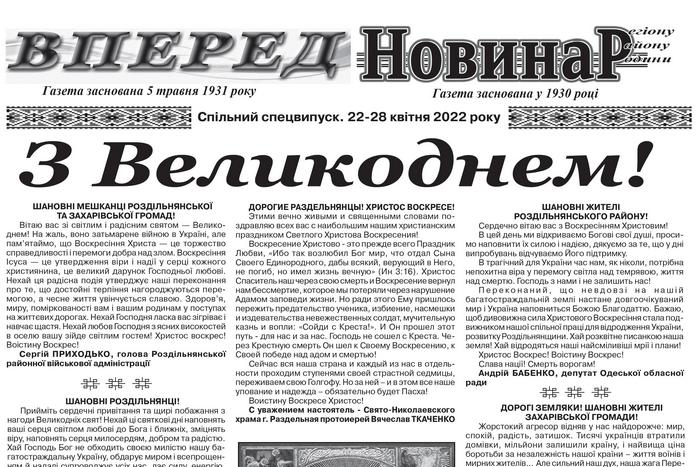
“Four joint issues were published, but our readers did not like the idea, there was a lot of criticism, so we had to stop that cooperation,” the editor-in-chief notes and adds that she still knows successful examples when editorial offices from consolidated districts of the region had united to work together.
Viktoriya Mainych is sure that in order to survive, the media needs to attract various opportunities, in particular, to create additional platforms that help attract funds. For example, together with Nataliya Bukovska, a colleague from the Vpered newspaper, they founded the Berehyni Odeshchyny non-governmental organization and have already become participants in the Syla Zhinok [Power of Women] project.
On the other hand, Tetiana Terza, the editor-in-chief of the Druzhba newspaper and the Makhala website, notes that they have nothing to complain about.
The newspaper has 2,500 subscribers. There has become less advertising in the printed edition, but instead, the demand for advertising on social media networks rose.
“The amount of advertising that has moved from the newspaper to Instagram remains at the pre-war level,” notes the editor and adds that, in addition, her editorial office has a contract for informational coverage of the activities of local authorities.
The team also actively participates in various grant projects: in particular, they managed to get the support of the Ukrainian Association of Media Business and the Media Development Foundation.
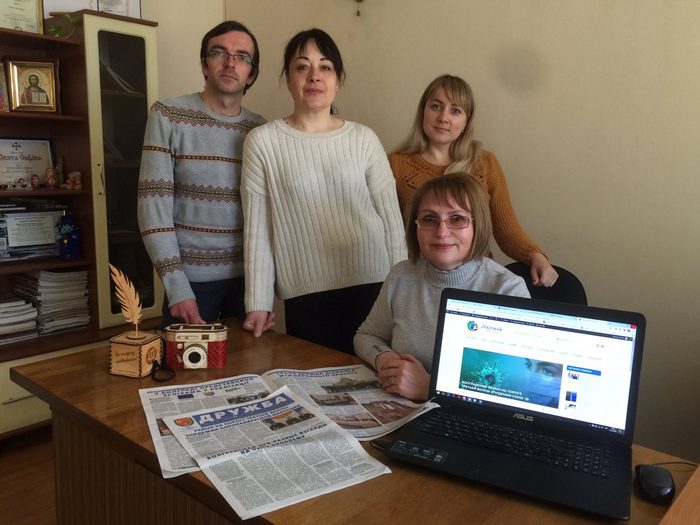
The editorial staff consists of six people. They did not have to apply either salary reductions or staff reductions. Moreover, every employee receives a salary above the minimum and had the opportunity to go on a two-week, however paid vacation.
Starting this year, the price of the subscription to the newspaper is also increasing. However, the number of pages remains stable, at eight.
“We ended the [previous] year debt-free, paid all taxes, paid all salaries. We already know the previous result of the subscription: we preserved our circulation. We hope that it will even grow,” says Tetiana Terza.
It is worth noting that the editorial office has its own development strategy, which provides for content coverage of other territories.
“I don’t want to force the unification of districts, but after the decentralization reform, let’s be honest, not everyone will be able to work. Therefore, I do not consider my colleagues from other publications to be competitors, but, on the contrary, I see them as allies for further fruitful work,” the editor notes.
Currently, the editorial office is actively working on the development of its own YouTube channel in order to be able to monetize it. In general, the editorial office is optimistic and has an ambitious goal – to create its own media holding Makhala.
Online media
According to Valerii Bolhan, in the pre-war period, about one and a half hundred online publications worked in Odesa. It is impossible to say the exact number since there is no register that records this data.
“With the beginning of the war, only about half of the publications remained on the online media market. The reason for this is quite obvious: they were not media by nature, but business or political projects of specific people,” the expert explains.
According to Valerii Bolhan, only a few of the media that remained on the market managed to preserve their editorial offices. Here, in particular, we can single out such major publications as Dumska, USI, Odesa Online, and Intent [formerly known IzbirKom, whose editor-in-chief, by the way, is Valerii Bolhan. – ed.]. The work of the rest is provided by 1 or 2 editors.
The expert notes that such a reduction in the number of publications on the online media market should not be considered a catastrophe: “On the contrary, if the law On Media [signed by the President on December 29, 2022, – ed.] does not force us into some limits, the market will ‘recover’. However, it still remains a problem that many commercial media conceal their owners and apply for grant projects as independent, actually receiving money for business projects of local oligarchs.”
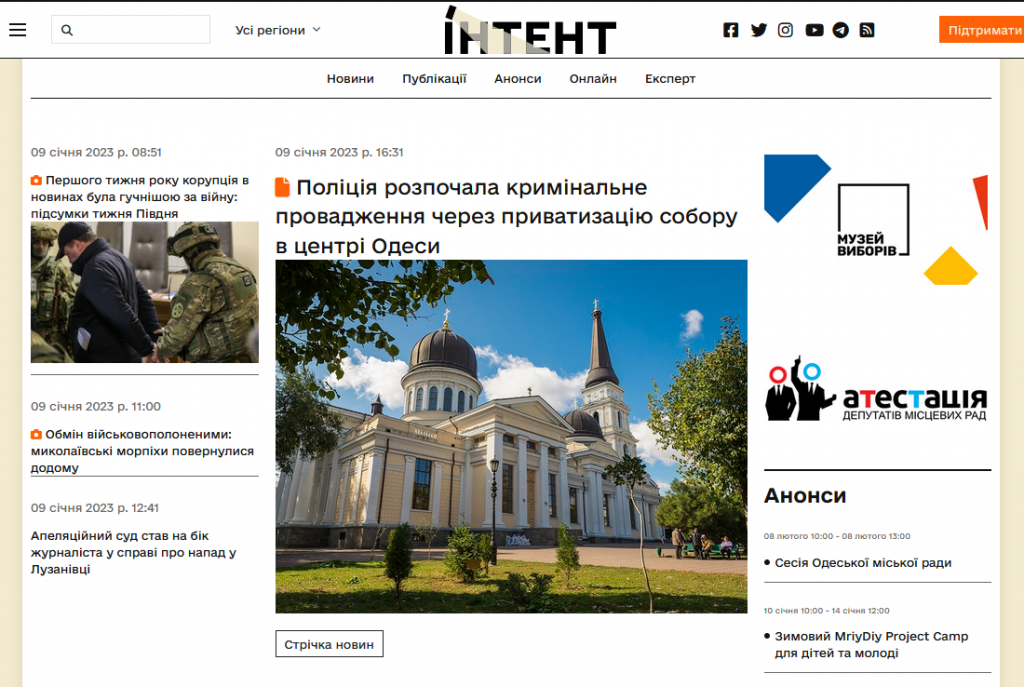
Regarding the activities of the Intent publication, according to the editor-in-chief Valerii Bolhan, the beginning of 2022 became a significant challenge for his team as well since the previous grant programs were just ending. Therefore, in the first days of the war, they did not understand what to do as part of the activities within the framework of these projects were carried out offline and, accordingly, became simply impossible to keep on.
“However, within two weeks, the situation stabilized – donors, Internews and DW, met us halfway. I think that not only us, but all independent media have sensed this significant support from donors,” Valerii notes and adds that the financial model of their publication is as follows: 97% grant funds and 3% income from advertising and donors.
“With the beginning of the war, the number of those who donated funds for our activities became even lower, as they preferred to help the Armed Forces of Ukraine, but this is a normal phenomenon, we are the same,” the editor of the online publication emphasizes and adds that, despite all the challenges, they managed to expand locally and start working in three regions (in addition to Odesa, they are the Mykolaiv Region and the Kherson Region).
“We managed not to cut any positions, to keep the rates. We were even able to index salaries by 10-20%, where it was possible, having 10 people in the staff, not counting the contributors who work for us for fees,” the interlocutor summarizes.
Halyna Khalymonyk and her team had to shut down the newspaper, but the situation with the online publications called Biliayivka.City and Open Dniester, which the team takes care of, is much more optimistic.
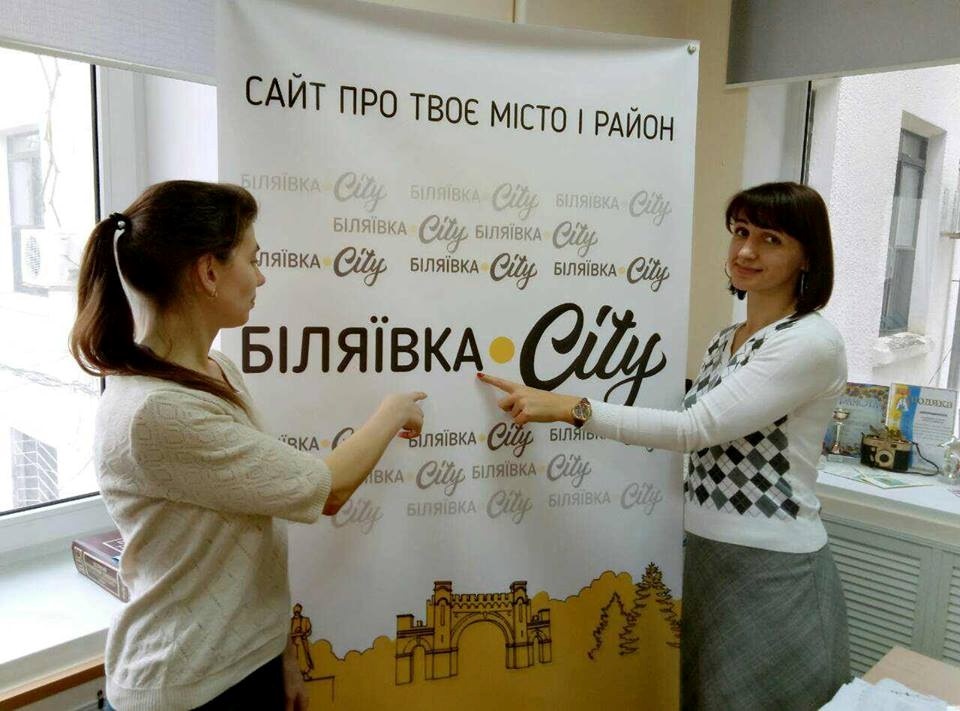
“Earlier, our team had four full-time employees. One more person was hired this year. So, there are already five of us working. In addition, we have up to ten contributors who work for fees. Thanks to the grants in which we actively participate, we feel financially secure,” notes Halyna.
She added that everyone’s salary has remained at the pre-war level, but each employee has additional income thanks to participation in donor projects: “There were no financial losses, we were even able to update our technical base: we bought a laptop for the editorial office and a modern phone for the work of a colleague who writes “breaking” materials.”
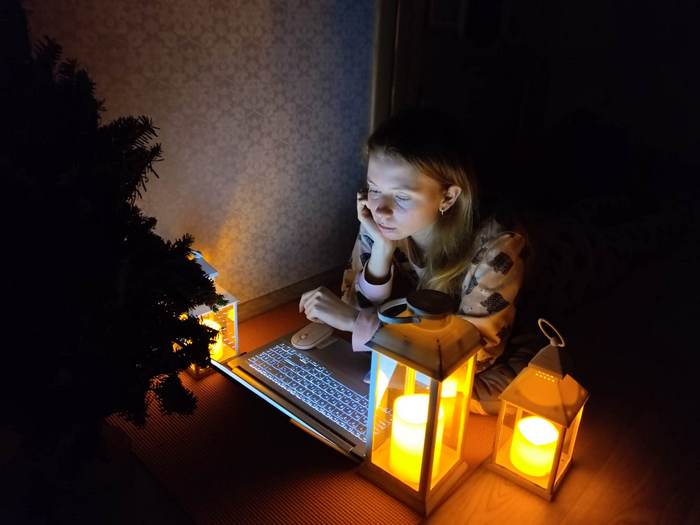
“We worked in the Internews project for almost a year, we cooperated with the Lviv Media Forum, MDF and the Media Business Association. In addition, we have advertising and a signed contract with the city council for informational support of its activities,” says Halyna adding that the editorial office has already won grant projects for next year.
“Thanks to the fact that we managed to get considerable financial support this year, we took on the mission of providing maximum financial support to our colleagues from the south, in particular, we ordered texts from journalists from occupied or de-occupied territories and paid good fees for them. Such cooperation, of course, was also useful for us, as it helps us reach a qualitatively higher level of work. As a result, the audience of our sites has grown to 180,000 unique visitors this year,” says Halyna.
Radio
Before the war, more than 15 radio companies had been registered in Odesa, but most of them were advertising and music oriented. Currently, there is only one commercial radio, Pershe Miske, which has several hours of broadcast with news, interviews with guests in the studio. Also, from time to time you can catch a few repeater waves.
According to Valerii Bolhan, radios turned out to be the least adapted to work in conditions of war and blackouts.
If, presumably, a small generator is enough for the operation of an online media company, radio companies are left without the ability to transmit a signal at all, because the providers had not prepared for such a situation. Communication disappears along with electricity in the region. “The signal dies literally within a minute,” Bolhan notes and adds that in the period from November to December, traffic in all media dropped catastrophically to 70%.
According to Institute of Mass Information (IMI) expert Pavel Kolotvin, the fact that during a blackout in the region it is impossible to catch any of the radio waves is a considerable threat to information security. Therefore, the IMI is currently preparing an appeal to the local authorities with a request to intervene in the situation and immediately take up the solution of the problem with local radio broadcasting in crisis situations.
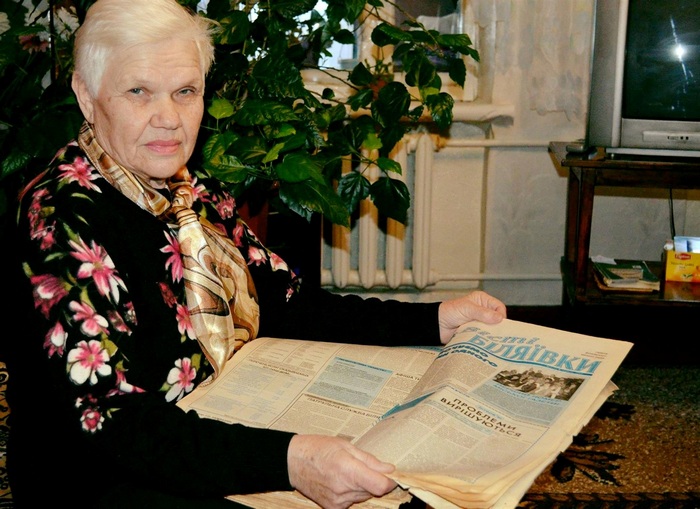
A reader with the first issue of the Visti Biliayivky newspaper
Conclusions
Valerii Bolhan, an expert of the NUJU, summarizes that, despite all the difficulties and challenges, he sees no reason to pessimistically assess the current situation in the media market of Odesa: “Despite the fact that the advertising market is just beginning to return, it has not yet recovered even by a third. And it was the war that managed to show the problem of political and business media – journalists finally realized that such models are bad, and the “financing owner” will not save them. As a result, many publications have already stopped working and many more will close, but thanks to this, we will get the market cleaned. Many have left and will leave the profession, but this is also not a large-scale problem, but a normal practice, since 5,000 journalists for Odesa is a clear overkill.”
Currently, the average journalist’s salary in Odesa is less than the average in the region, according to State Statistics Committee, which is UAH 12,000. But the expert is convinced that after the Victory, the salary level will increase significantly, although the criteria for the requirements for professionalism will also increase, and therefore many colleagues will have to retrain.
Recommendations
To save their media outlet, its managers should:
– optimize editorial expenses,
– develop reading clubs,
– actively work with Ukrposhta, study alternative ways of delivering information to the reader,
– study the market of grants, actively submit applications.
Alina Aponchuk


